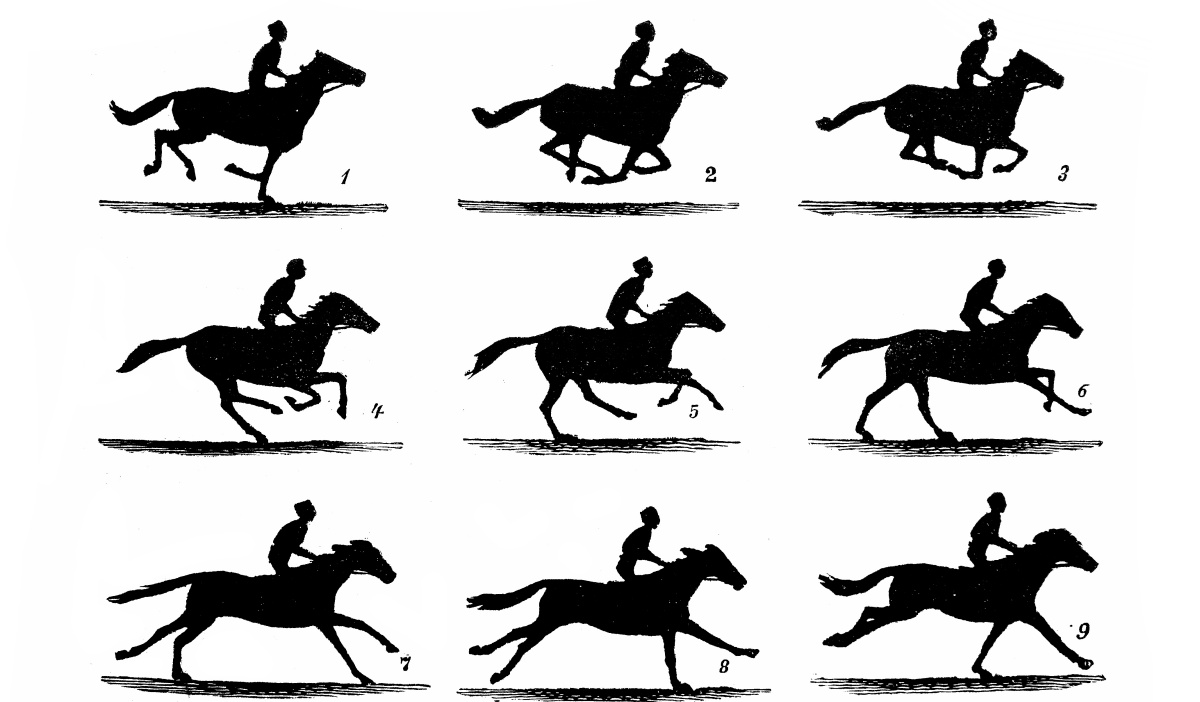Oh, the Guy Behind ‘The First Motion Picture’? Yeah, He Was a Murderer

Jordan Peele’s latest film, Nope, heavily references The Horse in Motion. Horse is a series of cabinet cards or photographs by English photographer Eadweard Muybridge. It includes six cards that each show a sequential series of “automatic electro-photographs” depicting the motion of a horse. The series became the first example of chronophotography. What is shown in Peele’s movie is a later animated version of these images. However, what I’m interested in is Muybridge himself, who murdered his wife’s lover.
Muybridge is an interesting figure who is a part of both film and true crime history. He began professional photography after suffering a serious head injury in a stagecoach incident, and created several patents for his inventions and developments of the technology.
In 1871 at the ripe age of 41 years old, Muybridge married 21-year-old divorcee Flora Shallcross Stone. While he was affectionate towards his wife, Muybridge was away very frequently. In her loneliness, Flora ended up taking up an affair with reporter Harry Larkyns. Whenever Muybridge was away, the two would meet up and send letters. Muybridge became aware of the letters and warned Larkyns to leave his wife alone. But that didn’t work. Eventually, Flora became pregnant with Larkyns’ child, a son.
When Flora’s nurse revealed the truth to Muybridge, he traveled to find Larkyns, called him out, and shot him point-blank with a pistol, close to the heart. He was taken into custody and was calm the whole time while he was held.
During the trial, most of the general public was on the side of Muybridge because they felt he had been wronged (Flora, however, was deeply saddened by the murder of her lover and filed for divorce). Muybridge’s defense talked about how his severe head injury had impacted his mental health. They also heavily slandered Larkyns and turned him into a seducing villain. Per the Sacramento Daily Union, Volume 48, Number 7438, 5 February 1875:
He had for months previously warned the Major not to speak to her or he would kill him. He settled his affairs and took the evening boat for Vallejo. Muybridge begged pardon of the ladies for causing the excitement. He said Larkyns had destroyed his happiness, and that men of family would appreciate his position.
[…]
In the part of the defense, made the opening speech to the jury, claiming that he should prove that Larkyns was a man of bad character; that he pursued the wife of the prisoner, and that he procured rooms on Montgomery street by representing himself as a married man, and induced her to accompany him there, of which fact he boasted to his friends. Circumstances having aroused Muybridge’s suspicions, he visited the house and discovered the picture with the name of the man whom he had forbidden his wife to speak to. Mrs. Smith then told him all, and from that moment he was not himself. Strung up to the pitch of insanity, he made up his mind that he must slay the destroyer to his happiness— the man who had debauched his home. The prisoner went to kill that man. He would have followed him to the ends of the earth for that purpose. We claim a verdict both on the ground of justifiable homicide and insanity.
The jury (which was all men) found Muybridge not guilty because they could all agree that they would have done the same in his position. Muybridge’s career was not tarnished, and he would go on to make The Horse in Motion in 1878. Even then, cancel culture didn’t work.
(featured image: Muybridge)
Have a tip we should know? tips@themarysue.com